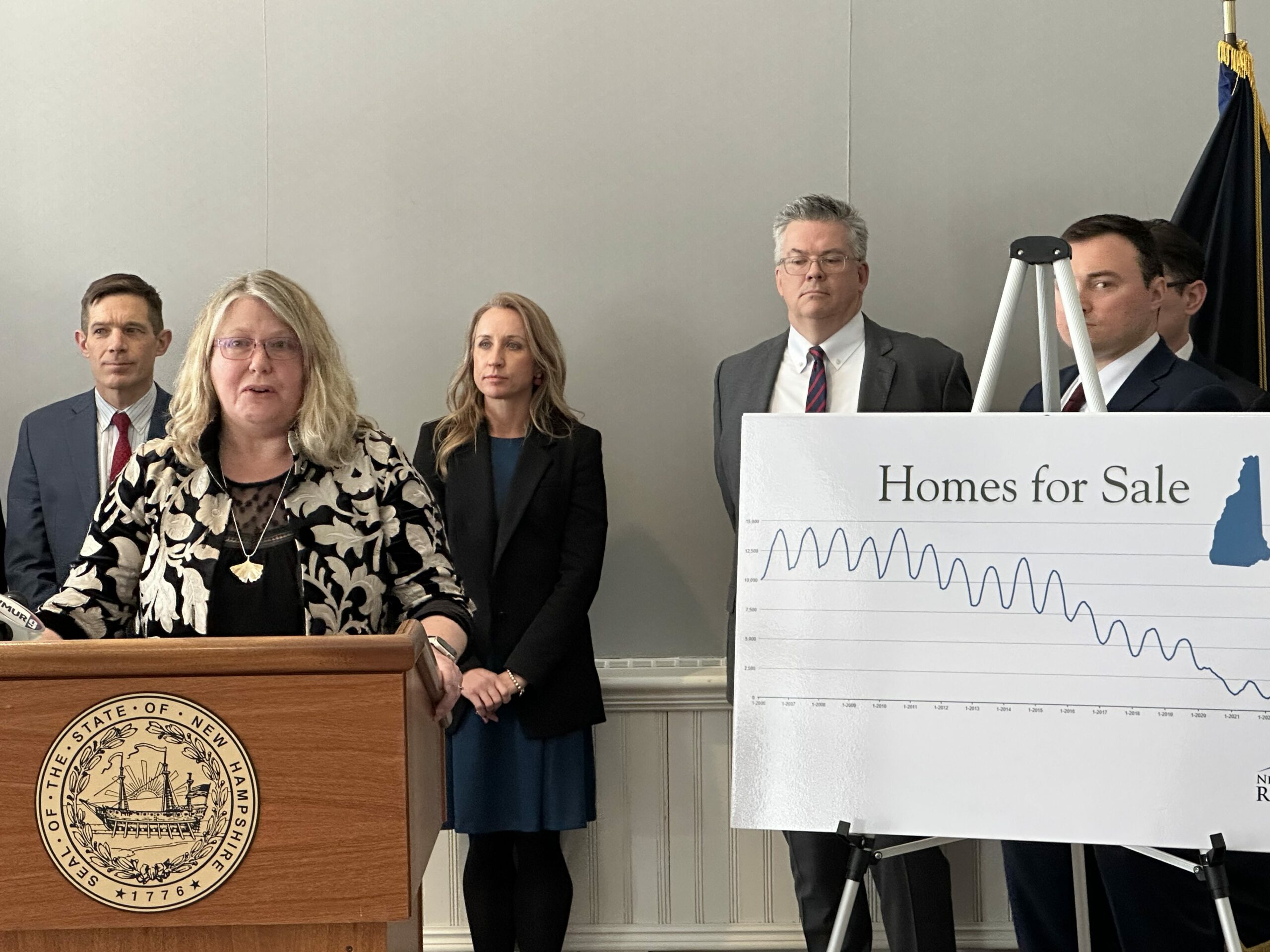Build, baby, build.
That was the message from business and industry leaders at a press conference Tuesday urging state officials to address New Hampshire’s housing shortage.
Speaking on behalf of the New Hampshire Housing Supply Coalition, Business and Industry Association (BIA), President Mike Skelton acknowledged “there is no silver bullet” to solve the housing problem, but there is no solution without increasing supply.
“The reality is that we have a supply-demand imbalance that has been developed over decades here in New Hampshire. And if we’re going to sustainably stabilize prices and bring in more affordability, we need to increase supply,” Skelton said. “This is a supply and demand issue.”
The coalition, which includes the New Hampshire Homebuilders Association, the New Hampshire Banking Association and the New Hampshire Association of Realtors, is backing seven pieces of legislation that promote what they call the “three pillars” of a housing policy:
- Land use reform
- Regulatory and permitting reform
- Program and funding support
The first, land use and zoning, present the largest challenge, in part because regulation is done at the the local level. Asked about the NIMBY (Not In My Back Yard) resistance in some Granite State communities, Skelton acknowledged it is “the largest challenge on this issue.”
“There is room, I firmly believe, for every community in New Hampshire to be part of the solution,” Skelton said. “We just have to look around the country. There are red states, blue states, purple states across the country who are enacting zoning reforms, housing supply reforms, pro housing policy of all shapes and sizes, and they’re doing so creatively while respecting the wishes and desires of their their communities.”
The scope of the problem isn’t in dispute.
In February, the statewide median home price hit a new record, $510,000, an increase of $35,000 over the past 12 months. Polls consistently show Granite Staters name housing their top concern.
And, Skelton noted, housing prices are up nearly 60 percent over just the last four years, the fourth highest rate of increase in the country.
Susan Cole, president of the New Hampshire Association of Realtors, said her members can tell you “hundreds of stories of buyers who have been submitting offers on homes for two years without success, and who are still searching for a home.

Susan Cole, president of the New Hampshire Association of Realtors, at a housing press conference on March 4, 2025.
“Just last week, I spoke with a couple who are so discouraged after losing out on numerous, multiple offer situations that they have decided to put their home search on hold, meaning their current home won’t be going on the market to provide an opportunity for another New Hampshire family,” Cole said.
And the objective data is just as troubling, Cole added.
“Ten years ago, New Hampshire had over 13,000 homes for sale across the state in the summer months. This past summer, we didn’t even reach 2,500 homes for sale. That’s an 80 percent decrease in the number of homes available.
“As housing inventory has plunged, so has housing affordability. Currently, the state’s median household income is only 59 percent of what is needed to purchase the median price, single-family home,” Cole said.
Some Democrats in the legislature have proposed legislation to address housing affordability by controlling prices or market access. House Democrat caucus leader Rep. Alexis Murray is the lead sponsor of legislation that would restrict the ability of companies to buy single-family and multi-family housing, for example. And legislation to impose some form of rent control or limits on rent increases has repeatedly been proposed.
Asked about those efforts, Skelton said they aren’t part of a realistic solution.
“We’re not going to restrict our way out of this issue. We need more supply in order to meet demand, and there certainly will be other policies and targeted solutions in different parts of the housing market. But nothing works sustainably unless supply starts to match demand,” Skelton said.
There is also an age aspect to the housing issue, coalition members said.
Corrine Benfield with Stay Work Play said young, first-time home buyers “are being shut out of the market altogether.
“We cannot accept that the dreams of home ownership and stability are out of reach for an entire generation.”
At the other end of the age spectrum is “a data point that keeps me up at night,” Skelton said.
“Twenty-seven percent of New Hampshire’s workforce is age 55 or older. That’s a lot. It’s even more when you consider that we are 50th in the country in that statistic.
“So, we have the most workers over the age of 55 as part of our workforce of any state in the country. We must ensure that our state can continue to attract and retain people for our workforce. We will not be able to compete economically otherwise. That is why this issue is so critical.”




